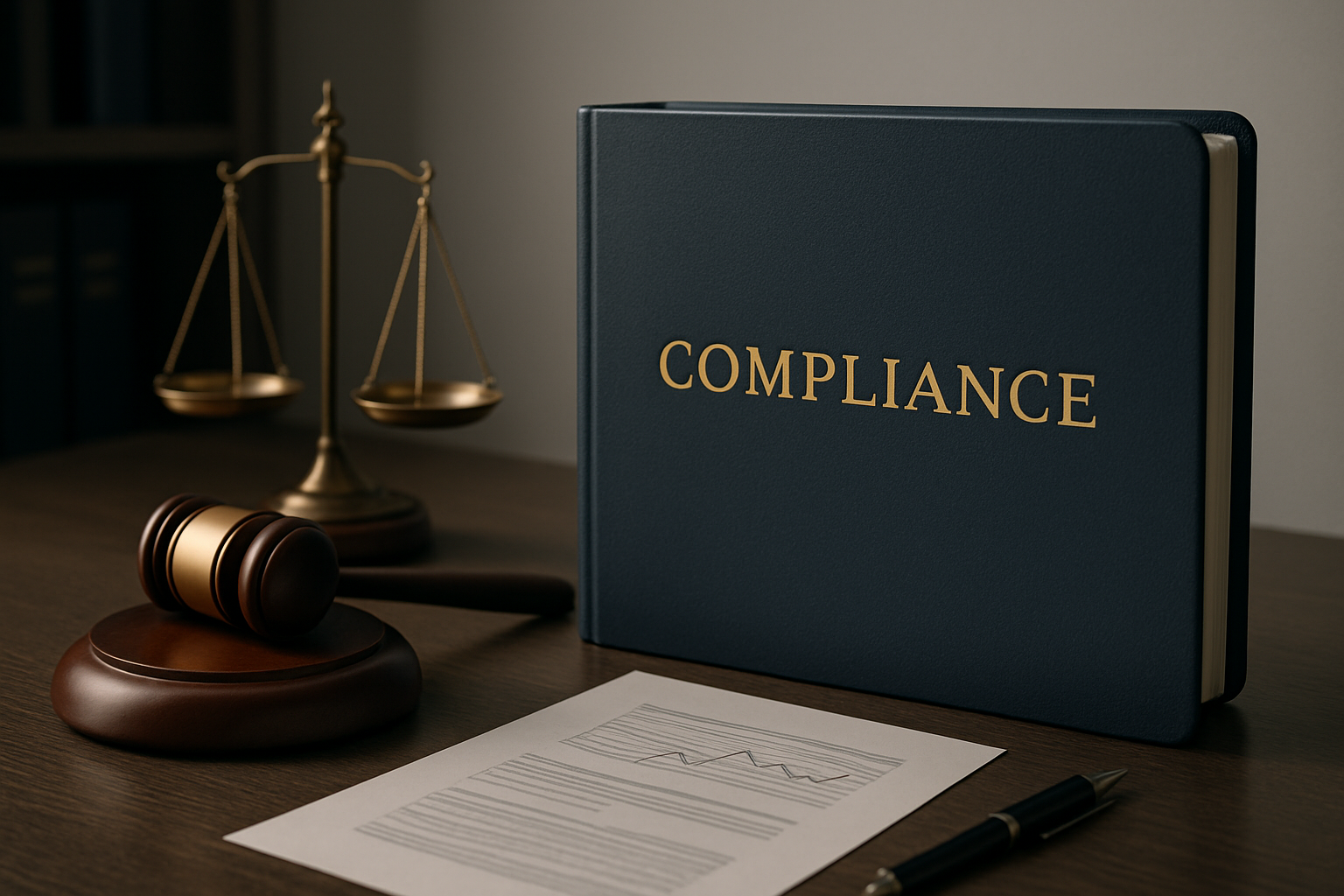For founders and business leaders in regulated industries such as finance, compliance has become a significant obstacle to innovation and scale. Not small potatoes either, more like an enormous boulder, rolling downhill and crushing your team's momentum every time you try to launch something new. Regulatory complexity has turned what was, at best, a routine overhead into a loud, costly bottleneck. It's honestly gotten pretty gnarly the last few years. If you've glanced at what banks and regulated fintechs are forking over just to keep pace, you know it's a reason to sweat.
A Deloitte study tracked actual compliance costs: banks are spending over 60% more here than they were before the financial crisis, and for a lot of shops, that eats up nearly all their "move fast" budget, leaving little for, well, moving fast. And the costs aren't flattening. Recent numbers peg global annual investment in financial crime compliance at a wild $206 billion, with North America alone dropping $61 billion. You might be thinking, "That's just what big banks pay," but small firms are groaning under this, too. Anti-Money Laundering (AML) controls, added headcount, and tech spend, if you're not feeling the pinch yet, just wait a couple quarters.
Yet the root problem runs deeper though. The rules themselves change all the time. The regulatory machine keeps spewing new requirements, just ask a Chief Compliance Officer (CCO) what keeps them up at night. Almost nine in ten compliance execs told PwC that the last three years have brought more complexity than any stretch before. This isn't just a back-office hassle anymore; for a lot of founders, it's stalling growth. The amount of cash and energy burnt on manual compliance isn't sustainable. And every week you lag, the risk of a compliance misstep, costing millions or more, gets nastier.
This backdrop has supercharged the RegTech sector, which is ballooning right along with the compliance problem. In 2024, the RegTech market sits at about $15.8 billion. But within less than a decade? Forecasts swing as high as $82.77 billion, with annual growth above 20%. So, everyone is trying to buy some relief from the red-tape avalanche.
With those numbers out there, you're probably already hearing chatter from VCs or peers: can't AI just handle all this compliance mess? Could an "AI CCO" plow through mountains of regs, spit out policy docs, flag sketchy trades, and keep the fines away? That's the pitch. But does it actually hold up under the microscope? That's the question founders are struggling with, and honestly, it's a fair one. The idea sounds seductive. The reality is trickier.
Let's dig into what an AI CCO really looks like (and where are the limits to what it can and can’t do).
Deconstructing the "AI CCO": What It Really Means?

When people talk about an "AI CCO," they don't mean some sentient robot in a suit handing down decisions or taking on regulatory grilling. That would be kind of hilarious, but no. The myth persists in some corners, an algorithmic brain churning through rules, instantly right about everything. That's not happening. The actual thing is much more like a network of specific AI tools, built to help real CCOs and their teams automate and manage very messy, very human-heavy parts of the compliance puzzle.
The underlying promise of AI here is simple. It's all about speed, scale, and accuracy. Human compliance teams can only move so fast and handle so much. Machine Learning (ML) and Natural Language Processing (NLP) can turbocharge those people, making it possible to react to regulatory change in hours (not weeks), map external rules to internal policies, and basically keep up as the sand keeps shifting underfoot.
Here's how it actually breaks down, function by function.
AI for Regulatory Intelligence
If you've tried tracking regulatory updates yourself (or watched your head of compliance go cross-eyed doing it), you know it's a nightmare. The U.S. Securities and Exchange Commission (SEC), Financial Industry Regulatory Authority (FINRA), and Food and Drug Administration (FDA) all churn out new releases, guidances, and best-practices at a dizzying speed. In 2024 alone, FINRA's yearly report tacked on whole new sections about crypto, tacked on more "best practices", the regulatory map is always shifting.
Now, consider this: academic studies show that NLP tools can process financial regulatory docs close to 12 times faster than seasoned human analysts, without losing accuracy. Better yet, newer AI models are almost 40% points more accurate than what the old, rules-based bots offered. What matters for you as a founder? Instead of being stuck in reactive mode (scanning dense new regs after the fact), AI can read and boil down these mountains of text instantly, modeling the impact on your workflow about as fast as the rules are released.
Instant regulatory intelligence. No more weeks of catch-up, no more risk of missing a Friday afternoon update that bites you by Monday.
AI for Policy Management
Of course, knowing the rule is one thing. Now somebody (or something) needs to figure out if your shop's actual policies match the rule. This is where a lot of teams break down. Typically, your CCO will hunker down, line up the regs and the manual, and try to spot every gap. That's tough, and the risk of missing something goes up with every new employee, every new product. AI is shifting this, too.
Modern RegTech tools use AI to map each regulatory obligation to your internal policies, flag what's missing, and even help draft the fixes. These aren't static compliance manuals anymore, they're "living" frameworks. Whenever the regulator updates a rule, your system can ping the related policy, suggesting tweaks or highlighting weak spots. This means your compliance framework is finally as dynamic and responsive as the regs themselves, not frozen in time and trailing reality by months.
AI for Surveillance & Monitoring

Honestly, this is where AI earns its keep. Surveillance in finance and other heavily regulated industries is an unsolvable math problem for humans alone. You're looking at millions of transactions, chats, and emails, desperate to spot anything that might be money laundering, insider trading, data leakage, or just a dumb slip-up that could incur a penalty.
Regulators have started punishing failures in this area (think of the SEC's "off-channel communications" sweep, over $600 million in fines just in a single year for missed WhatsApp and SMS retention). Manual review really isn't feasible anymore. Manual teams cover maybe 3% of all communications; there's a 97% risk gap. AI, especially NLP, is the only viable way to scan and flag issues in all that noise.
It's not just about catching bad actors, though; it's about making alerts smarter. In compliance, "false positives" are the bane of existence. Older, rules-based systems generate floods of pointless warnings (up to 95% false alarms in some banks), bogging down human reviewers. Next-gen AI systems have driven these false positives down by over 90% in real deployments, pretty substantial. This makes your team faster, less frustrated, and actually, sort of, free to handle the real threats.
AI for Reporting
This is probably the least flashy but most quietly transformative part. Reporting to auditors and regulators still ties up a huge chunk of compliance team bandwidth, and manual aggregation is a recipe for delayed filings and outright mistakes. AI is already automating the hell out of this. KPMG reports that about 72% of companies are already using some form of AI for financial reporting, and within a few years just about everyone will be on board.
AI can aggregate and structure the gnarly underlying data you need for things like Pillar 3 disclosures for banks, and it can now also auto-generate the narrative bits, summaries, risk statements, even coverage of anomalies. In fraud or money-laundering compliance, SAR filings (Suspicious Activity Reports) can be prepared with up to 70% less human effort thanks to these automations. So your compliance team isn't scrambling to pull data from six systems at the last second. Instead, these tools surface what matters, where it matters, and your reports land on the regulator's desk on time (and, probably, with fewer headaches for everyone).
Some firms have shaved days, sometimes even weeks, off their reporting cycle. It doesn't mean zero headaches, but it does mean you're less likely to trip over filings or scramble to explain missing data at your next audit. Plus, there's proof that automation here actually lowers error rates, for example, the big accounting firms now expect that over half the manual mistakes that once triggered audits can be eliminated with automation that checks for completeness and logical gaps moment-to-moment instead of at month-end.
So that's the real "AI CCO": a suite of advanced tools doing narrow but critical things better and faster, all helping a human team keep up in a world where the old way doesn't cut it. It isn't a robot overlord in a blazer, but it honestly doesn't need to be.
The Business Case: ROI of an AI-Augmented Compliance Function
If you're a founder, "sounds cool" means nothing unless it solves a budget and bandwidth crunch in real life. So let's just talk like people who have to justify every dollar spent to the board, or, in some cases, to ourselves on Sunday night.
Cost Reduction
This is the big promise, right? Ditch a chunk of the headcount, maybe even a whole external consulting contract, and pocket the difference. When you look at where compliance hours go, staring at policy docs, churning through transaction logs, fixing little data errors, it's obvious that AI can cut huge slices of labor from the budget. The formula most people use honestly isn't that complicated at its base:
Cost of Compliance (Manual) = (Human Hours per Task) x (Hourly Rate) x (Task Volume)
A Gartner benchmark shows that compliance spend usually grows linearly with headcount, not with transactions or clients. AI changes the curve. For example, AI-driven transaction screening systems have been shown to cut alert review times by up to 80%, and policy mapping by 60% to 70%. Imagine your in-house legal or compliance spend dropping by almost half and your external consultant's bill doing the same. Founders actually using these tools report that a $5,000-a-month compliance tool saves them two or three full-time employees' worth of grind. Not exactly small potatoes.
Are you going to fire everyone? No. But you might finally take that compliance "arms race", adding people every year, and put it on pause. For startups and mid-sized companies, it means capacity actually starts to scale up automatically, without monthly panic meetings about hiring or layoffs. And that should be a little bit of relief for anyone sick of the see-saw.
Risk Mitigation

Let's not forget why compliance is so expensive in the first place: risk. Manual compliance is full of holes. Unflagged insider trades, ignored SARs, lives lost in healthcare because someone missed the latest FDA update (which, yeah, happens more often than anyone wants to admit). Regulators are unforgiving. In 2022, banks and fintechs faced over $4 billion in compliance penalties, with some single missteps costing $100 million or more.
What's wild is that legacy surveillance tools pumped out so many "false positives" they made the situation worse. Massive labor costs, missed real threats, and unhappy auditors circling your office. But when AI systems trimmed false positives by even 30%, the remaining alerts got much sharper, and the cost of follow-ups dropped. Some fintechs have gone from reviewing 10,000 alerts each year with a team of 30, to reviewing 2,000, with a team under 10, without dropping coverage. There's no magic, but that's superhuman accuracy in action: the right alerts, handled right now, not a week too late.
For firms stuck in multi-million dollar regulatory sweeps (think crypto or digital banking), the savings are even more intense. AI's 24/7 vigilance, spotting risks as they crop up, means you can actually say you did your best. That might not save you every time, but it does genuinely reduce the risk and scale of regulatory nightmares.
Scalability & Speed
Okay, scaling is where these tools stop being "nice-to-have." Suppose you're sprinting from a few thousand users to a hundred thousand, or you're trying to expand into new markets. Most legacy compliance setups freak out at this point. Headcount lags, talent is scarce (shout-out to anyone who's tried to hire a compliance lead in the past year), and you just plain can't launch fast enough.
With AI, policy updates land on the same day the regulator blinks. Automated transaction checking works for 10 users or 10 million, and nobody is up at 2 a.m. reviewing reports. You launch a new broker product in a week, not three months. This "built-in scalability" isn't theoretical; new RegTech deployments are proving it out every quarter, with time-to-market for new features shrinking across the board.
If you're tired of hearing "we can't scale until we add fifty more risk analysts," this is your shot at a better answer.
The Human Element: The Irreplaceable CCO
So, yeah, it all sounds super-futuristic. Why doesn't every regulated founder just scrap the compliance department and let the AI fly solo?
Well, that's the myth part. It's tempting to believe an AI can just take over, but as any CCO will tell you (if you get them on their third coffee), this job is still deeply human. Here's the real story: AI is the best junior compliance assistant you'll ever have. The CCO? They're not going anywhere, but what they do is shifting fast.
Overseeing the AI
First, someone has to actually supervise all these models. Not just for quality, but for ethics and fairness, too. AI is really good at spotting what it's trained on, not so hot with surprises. Data bias, skewed model training, or just overfitting, all can lead to either missing the real issue or flagging people unfairly. Regulators already expect a person to be "in the loop," conducting regular audits of AI algorithms, reviewing training data, and validating that alerts and reports aren't skewed for, say, gender or race.
A big part of the modern CCO's job is just that: testing the boundaries, retraining the AI when the world changes, and explaining to auditors how decisions were made. This is why, no matter how good the AI is, the law still says a human has to sign the annual compliance attestation.
Handling Novel, Edge-Case Scenarios
Most problems are routine, but edge cases land with a thud. That's where machines start to panic and pump out weird or wrong answers, especially if your operation is pioneering something nobody's ever tried before (crypto tokens, NFTs, embedded insurance, you name it). The CCO is the one who untangles these messes, brings context, and makes judgment calls that AI can't handle.
You can actually think of it like this: AI handles 95% of the "normal." The CCO lives in the wild and confusing 5%.
Strategic Counsel to the Board
This part is impossible for machines. Boards are worried about risk, reputation, and the shape of future regulation. The CCO isn't just a box checker anymore; they're now counselors for how to move fast, without landing the company on the front page of the Wall Street Journal for all the wrong reasons.
More and more, CCOs are spending their time helping leadership figure out gray areas, project risk scenarios, and sometimes shape the very policies that regulators will look at months or years from now. The AI gives them facts, trends, and probabilities. The human brings the judgment and, quite frankly, the courage.
The Human Touch: Final Judgment and Ethical Decision-Making
The stakes in compliance aren't just financial. They're reputational. One wrong decision, even backed up by flawless AI, can still doom a business, if it's perceived as unfair, harsh, or tone-deaf. CCOs are still the conscience of the business. The AI flags the issues, but only a human can say, "This feels wrong. Let's rethink it." Or, sometimes, "Let's call the regulator and ask." You'll never talk an AI into picking up the phone when judgment goes beyond ones and zeroes.
Final Thoughts: Building Your AI-Powered Compliance Co-Pilot
If you've read this far, maybe you're still hoping for a sci-fi breakthrough, a single super-intelligent compliance machine that lets you cut the CCO team loose. But by now, it's probably clear that what's coming is something a bit messier, a bit more realistic, and actually, quite a bit more helpful for growing real companies.
Your CCO spends their time steering the ship, working through the sticky questions nobody else wants, and strategizing with leaders. Meanwhile, the AI handles the grunt work: mapping new regs, flagging risky emails, crunching through transactions at the speed of light, and making sure your filings don't slip.
You gain speed. You get scale. You avoid, or at least postpone, those midnight compliance scares. But you keep the heart and intuition of a real leader in the seat, making calls that machines never will.
And if marketing compliance is your biggest headache? Well, you can actually try an AI-powered review setup that helps shrink the risk, effort, and the massive time suck that comes with keeping all your campaigns compliant, as you scale. Luthor gives you that co-pilot. It doesn't replace your team; it just hands back a load of hours you'll never get sorting out boring details, chases down what matters, and keeps you moving forward.
If you want to see what that looks like, you can request demo access and decide for yourself if it cuts through your most annoying compliance pain points.




